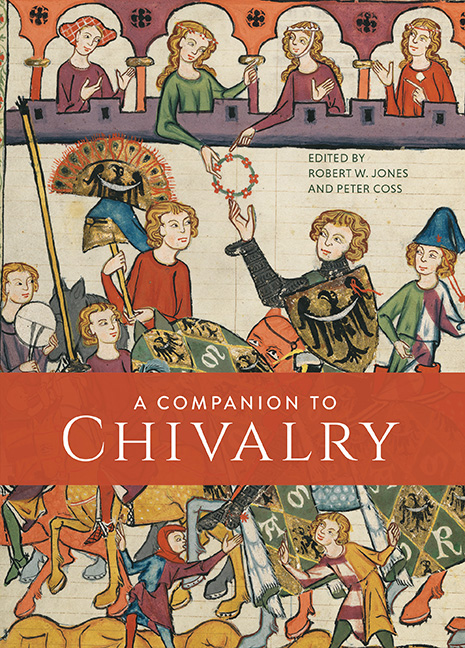Book contents
- Frontmatter
- Contents
- List of Illustrations
- List of Contributors
- Introduction
- 1 The Origins and Diffusion of Chivalry
- 2 The Organisation of Chivalric Society
- 3 The Secular Orders: Chivalry in the Service of the State
- 4 The Military Orders
- 5 Marshalling the Chivalric Elite for War
- 6 Chivalric Violence
- 7 Chivalry in the Tournament and Pas d'Armes
- 8 Heraldry and Heralds
- 9 Arms and Armour
- 10 Constructing Chivalric Landscapes: Aristocratic Spaces Between Image and Reality
- 11 Gendered Chivalry
- 12 Chivalric Literature
- 13 Manuals of Warfare and Chivalry
- 14 The End of Chivalry? Survivals and Revivals of the Tudor Age
- 15 Chivalric Medievalism
- Select Bibliography
- Acknowledgements
- Index
1 - The Origins and Diffusion of Chivalry
Published online by Cambridge University Press: 24 October 2019
- Frontmatter
- Contents
- List of Illustrations
- List of Contributors
- Introduction
- 1 The Origins and Diffusion of Chivalry
- 2 The Organisation of Chivalric Society
- 3 The Secular Orders: Chivalry in the Service of the State
- 4 The Military Orders
- 5 Marshalling the Chivalric Elite for War
- 6 Chivalric Violence
- 7 Chivalry in the Tournament and Pas d'Armes
- 8 Heraldry and Heralds
- 9 Arms and Armour
- 10 Constructing Chivalric Landscapes: Aristocratic Spaces Between Image and Reality
- 11 Gendered Chivalry
- 12 Chivalric Literature
- 13 Manuals of Warfare and Chivalry
- 14 The End of Chivalry? Survivals and Revivals of the Tudor Age
- 15 Chivalric Medievalism
- Select Bibliography
- Acknowledgements
- Index
Summary
What is Chivalry?
Historians have been reluctant to offer one–line definitions of chivalry. In introducing his masterpiece, Maurice Keen, for example, called it ‘a word elusive of definition’. Instead he either describes it genetically as an ‘ethos’, a ‘code of values’ or a ‘way of life’, or expresses himself elliptically: ‘Chivalry cannot be divorced from the martial world of the mounted warrior: it cannot be divorced from aristocracy, because knights commonly were men of lineage: and from the middle of the twelfth century it very frequently carries ethical or religious overtones.’ The reluctance to define is to be explained, in part at least, by conceptual slippage within the sources themselves. The meaning changed according to writer, time and context. Its earliest uses, however, seem to have been to denote a company of knights (chevaliers) and to describe the specific skills and training that they exhibited. It is important to say at the outset that the existence of chivalry (chevalerie) was predicated upon that of the knight: no knighthood, no chivalry.
The rise of the knight (miles in the Latin sources) has been carefully tracked by historians. Warrior society in the eleventh century, as Jean Flori tells us, had two powerful arms: the immobile (the castle) and the mobile (the knight). This mobility was the all–important factor in military terms. It explains the evolution that the word miles underwent. Originally it meant no more than soldier. It also carried service connotations and could be used to denote vassal. However, in the eleventh century it came to be used in preference to designate a mounted warrior and to replace equites (used in contradistinction to pedites, that is, footsoldiers). By the middle of the eleventh century such milites were deployed increasingly as castle garrisons, in battles (a relatively rare phenomenon) and more frequently for armed raids. The milites were becoming a professional elite. This was greatly aided by technical developments. These are well known. Of major importance were stirrups and the high–backed saddle, vital for stability and balance, especially when it came to using the lance and the sword. This enabled the powerful cavalry charge with couched lance followed by the mêlée described so often and so vividly in the epic chansons de geste (songs of deeds).
- Type
- Chapter
- Information
- A Companion to Chivalry , pp. 7 - 38Publisher: Boydell & BrewerPrint publication year: 2019



